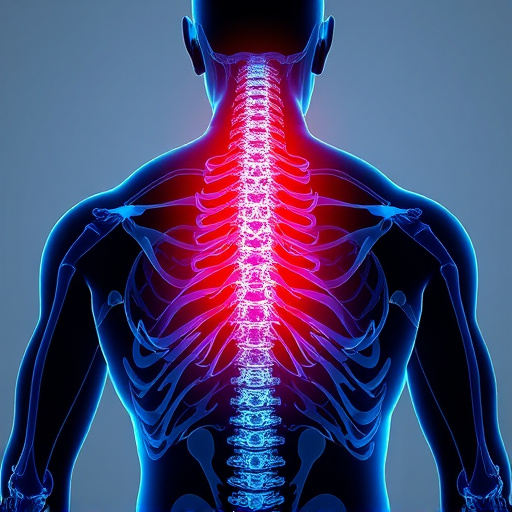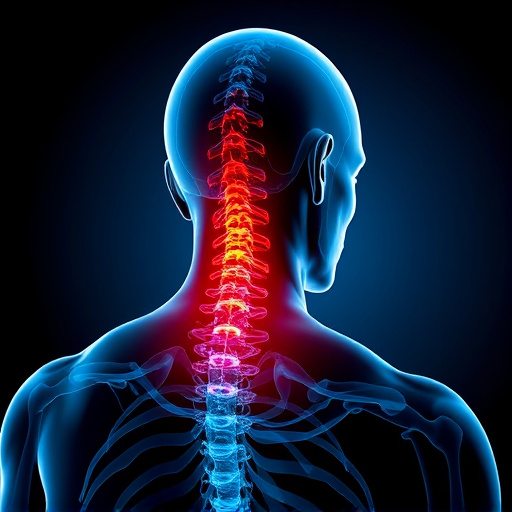Neck and Back Pain Relief: Individualized approaches are key to effective treatment, considering age, lifestyle, occupation, and symptoms. Traditional one-size-fits-all plans are less successful. Comprehensive patient assessments guide customized programs combining physical therapy, ergonomic adjustments, exercises, and lifestyle modifications. Non-invasive therapies, tailored based on severity and needs, offer proven results. Encouraging lifestyle changes through education empowers patients to manage their well-being. Continuous monitoring ensures the plan adapts to each patient's evolving needs for optimal neck and back pain relief.
Neck and back pain is a prevalent issue, affecting millions worldwide. This article explores an individualized approach to address these concerns, focusing on tailored treatment plans for optimal pain relief. We delve into understanding various causes and symptoms of neck and back pain, highlighting the benefits of personalized care. Through comprehensive medical assessments, non-invasive therapies, lifestyle modifications, and continuous progress monitoring, patients can experience lasting solutions, transforming their lives and alleviating chronic discomfort.
- Understanding Neck and Back Pain: Causes and Common Symptoms
- The Benefits of an Individualized Treatment Plan
- Assessing the Patient: Gathering Comprehensive Medical History
- Tailoring Non-Invasive Therapies for Effective Pain Relief
- Incorporating Lifestyle Changes for Long-Lasting Results
- Monitoring Progress and Adjusting the Treatment Strategy
Understanding Neck and Back Pain: Causes and Common Symptoms

Neck and back pain is a prevalent issue affecting individuals across various demographics, with numerous potential causes and varying symptoms. Understanding these nuances is paramount in determining the most effective approach for relief. Common triggers include poor posture, muscular strain from physical labour or sports, and degenerative conditions like arthritis that affect the spine over time.
Symptoms can range from mild discomfort to severe, debilitating pain, often accompanied by stiffness, numbness, or tingling sensations radiating down the arms or legs. Identifying these specific manifestations is crucial for tailoring treatment plans. For example, a patient experiencing acute neck pain following a accident may require immediate medical intervention, while someone with chronic back pain resulting from years of incorrect lifting techniques might benefit most from physical therapy and ergonomic adjustments to prevent further aggravation.
The Benefits of an Individualized Treatment Plan

An individualized approach for each patient’s needs offers significant advantages in managing neck and back pain relief. Traditional treatment plans often employ a one-size-fits-all strategy, which may not address the unique root causes and complexities of each individual’s discomfort. In contrast, tailored interventions consider personal factors such as age, lifestyle, occupation, and specific symptoms, leading to more effective outcomes. By focusing on these nuances, healthcare providers can create customized programs that target specific pain triggers and promote lasting relief.
This personalized touch ensures that treatments are not only efficient but also patient-centric. For instance, a plan might include a combination of physical therapy, ergonomic adjustments, targeted exercises, and lifestyle modifications, all designed to address the patient’s unique challenges. Such an approach fosters better engagement, as patients feel heard and understood, boosting their confidence in the treatment process and encouraging adherence to recommended strategies for managing and preventing future neck and back pain.
Assessing the Patient: Gathering Comprehensive Medical History

A crucial step in providing an individualized approach for each patient’s needs, particularly those seeking neck and back pain relief, is assessing the patient thoroughly. This process begins with gathering a comprehensive medical history. Healthcare providers must delve into the patient’s past and present health conditions, surgeries, medications, allergies, and any previous treatments or therapies they have undergone. Understanding these factors is essential to identify potential causes of pain and rule out any underlying issues that may require specialized care.
During this assessment, it’s vital to inquire about the onset and progression of neck and back pain, any triggering activities, and the effectiveness (or lack thereof) of previous treatments. Patients should be encouraged to share details about their lifestyle, occupation, and daily routines as these factors can significantly impact their condition. By collecting this comprehensive information, healthcare professionals gain valuable insights into tailoring interventions for optimal neck and back pain relief.
Tailoring Non-Invasive Therapies for Effective Pain Relief

In the quest for optimal patient care, healthcare professionals are increasingly recognizing the value of an individualized approach to treatment, especially when addressing prevalent issues like neck and back pain relief. Non-invasive therapies, once a second-line option, have evolved into a primary focus as research uncovers their effectiveness and safety. Customizing these therapeutic interventions ensures that each patient receives a personalized solution tailored to their unique condition and needs.
For instance, while heat and cold therapy remain fundamental, application methods and duration can vary significantly between individuals. A carefully considered approach might involve targeted applications for acute pain versus prolonged sessions for chronic conditions. Similarly, exercise protocols designed for spinal compression or joint mobilization must be adapted based on the patient’s flexibility, strength, and specific pain points. This individualized strategy not only enhances treatment outcomes but also fosters a sense of empowerment among patients who actively participate in managing their own well-being.
Incorporating Lifestyle Changes for Long-Lasting Results

Incorporating lifestyle changes is a crucial aspect of achieving long-lasting neck and back pain relief. It’s more than just treating symptoms; it’s about empowering patients to take control of their well-being. By adopting a holistic approach, healthcare professionals can guide individuals toward sustainable habits that not only alleviate current discomfort but also prevent future exacerbations. This may include encouraging regular exercise tailored to the patient’s abilities, emphasizing proper posture and movement patterns throughout the day, and recommending dietary adjustments for improved overall health.
These lifestyle modifications become a foundation for managing pain, allowing patients to experience significant improvements in their neck and back pain relief. Through education and support, individuals learn to make conscious choices that positively impact their bodies, fostering a sense of empowerment and control over their conditions. As a result, they can maintain optimal physical function and overall quality of life.
Monitoring Progress and Adjusting the Treatment Strategy

A crucial aspect of an individualized approach for patients seeking neck and back pain relief is continuous monitoring of their progress. Healthcare professionals must regularly assess the effectiveness of the treatment strategy, taking into account feedback from the patient. This involves tracking key metrics such as pain levels, mobility, and overall functionality to gauge whether the current plan is yielding the desired results. By staying vigilant, practitioners can identify early signs that adjustments are needed, ensuring the treatment stays on track and aligned with the patient’s unique needs.
When progress stagnates or deters, it prompts a thoughtful reevaluation of the treatment strategy. This might involve tweaking exercises, adjusting medication, or incorporating alternative therapies to create a more tailored and responsive care plan. Such adaptability is vital for providing effective neck and back pain relief, as every patient’s journey is distinct, and their response to treatments can vary significantly.














